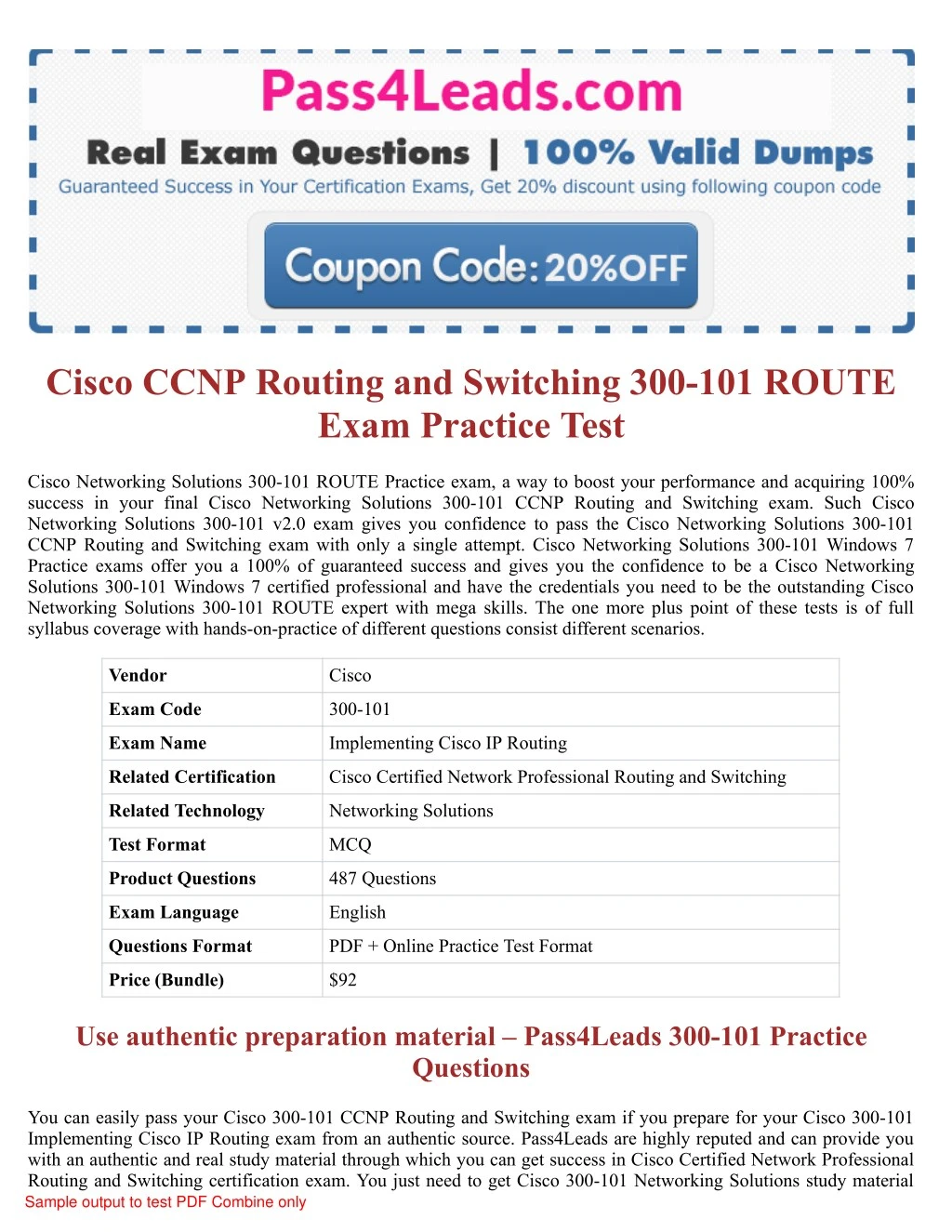Ccnp Route Ppt Slides

Cisco 300-101 Implementing Cisco IP Routing (ROUTE v2.0) is easy to pass with the help of testified 300-101 practice test questions answers. VceTests provide CCNP 300-101 real exam questions answers with 100% passing guarantee and money back assurance. VceTests assure to pass ROUTE v2.0 300-101 exam in the first attempt and provide you updated 300-101 practice test software. Get your verified 300-101 dumps with real 300-101 braindumps in pdf along with 300-101 Desktop Practice test.
Which statement is true about the PPP Session Phase of PPPoE? PPPoE functions as a Layer 3 encapsulation method that allows data to be transferred over the PPP link within PPPoE headers. PPP options are not negotiated and authentication is performed. Once the link setup is completed, PPPoE functions as a Layer 4 encapsulation method that allows data to be transferred over the PPP link within PPPoE headers.
Aiohowis.com is Media search engine and does not host any files, No media files are indexed hosted cached or stored on our server, They are located on soundcloud and Youtube, We only help you to search the link source to the other server. The media files you download with aiohowis.com must be for time shifting, personal, private, non commercial use only and remove the files after listening. Aiohowis.com is not responsible for third party website content. Bangla islamic gojol mp3 song. It is illegal for you to distribute copyrighted files without permission.
Describe the background and history of Enhanced Interior Gateway Routing Protocol (EIGRP). Examine the basic EIGRP configuration commands and identify.
PPP options are automatically enabled and authorization is performed. Once the link setup is completed, PPPoE functions as a Layer 2 encapsulation method that allows data to be encrypted over the PPP link within PPPoE headers. PPP options are negotiated and authentication is performed. Once the link setup is completed, PPPoE functions as a Layer 2 encapsulation method that allows data to be transferred over the PPP link within PPPo E headers.
PPP options are negotiated and authentication is not performed. Once the link setup is completed, Answer: D. For security purposes, an Ipv6 traffic filter was configured under various interfaces on the local router. However, shortly after implementing the traffic filter, OSPFv3 neighbor adjacencies were lost. What caused this issue?
The traffic filter is blocking all ICMPv6 traffic. The global anycast address must be added to the traffic filter to allow OSPFv3 to work properly. The link-local addresses that were used by OSPFv3 were explicitly denied, which caused the neighbor relationships to fail. Ipv6 traffic filtering can be implemented only on SVIs. Answer: C https://www.vcetests.com/300-101-vce.html.
Router A and Router B are configured with IPv6 addressing and basic routing capabilities using oSPFv3. The networks that are advertised from Router A do not show up in Router B's routing table. After debugging IPv6 packets, the message 'not a router' is found in the output. Why is the routing information not being learned by Router B? Raspolozhenie medalej na kitele mvd rb. OSPFv3 timers were adjusted for fast convergence. The networks were not advertised properly under the OSPFv3 process. An IPv6 traffic filter is blocking the networks from being learned via the Router B interface that is connected to Router A.